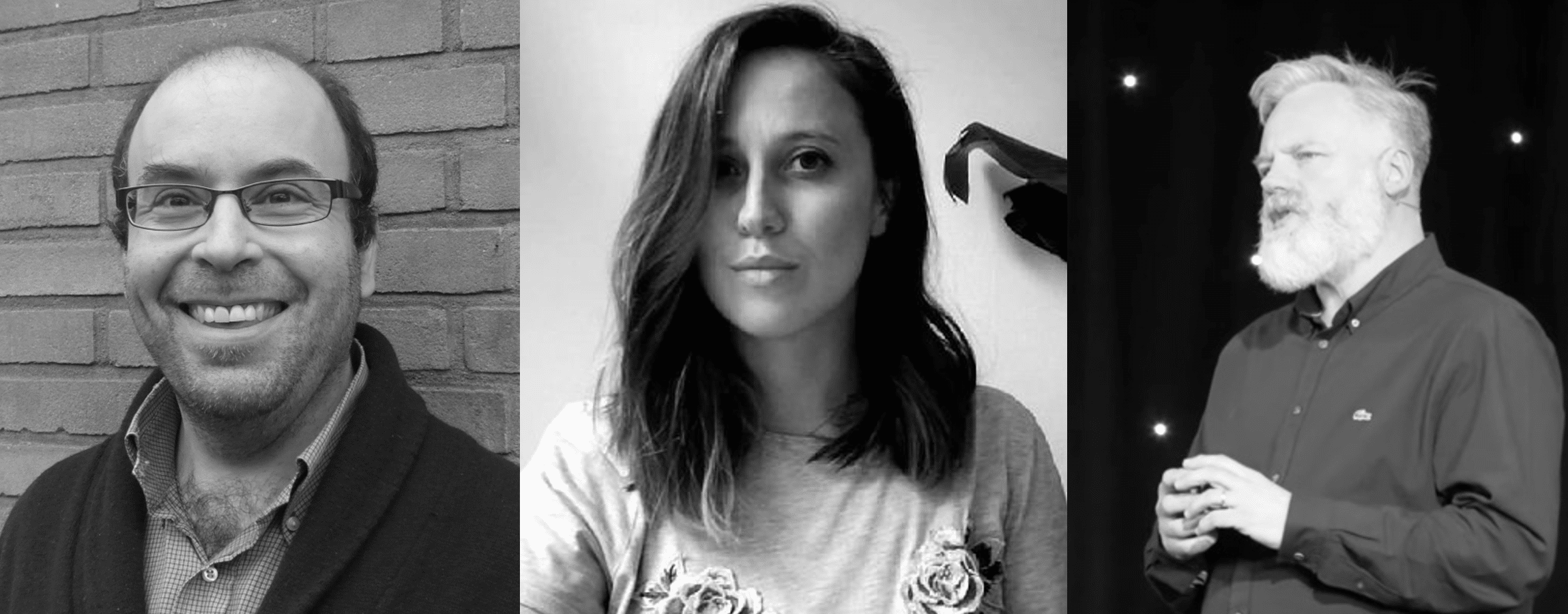A very special guest post from three very high calibre thinkers, philosophers and clinicians. My sincere thanks to Julian Kiverstein, Laura Rathbone and Mick Thacker for sharing their post with us, so that we can have the pleasure of sharing it with you.

Traditionally physiotherapists (and other physical or manual therapists) have focused on treating tissue damage, not the person with pain. However, to treat the person, and not only the part of them that hurts, clinicians need to make sense of the highly complex experience of being in pain.
Many patients with chronic pain experience pain from the moment they wake until the moment they fall asleep. Pain penetrates every experience they have of the world. Their ability to work, take care of their children, exercise and enjoy the company of friends can suddenly be lost to them. In short, little of their lives is untouched by their experience of being in pain. They may struggle to retain a grip on the life they led before pain took hold of them. Faced with such a complex experience, patients may look to clinicians to make sense of this for them.
Clinicians may try to answer their patient’s questions about pain by reaching for an objective, scientific and biomedical model of pain. They may have been trained for instance to think of pain as like an alarm system warning of tissue damage. Clinicians use this model to explain to patients what they are experiencing and how they will treat them. The trouble is the model therapists have been taught inevitably leaves much unexplained, both for the clinician and the patient.
According to the popular biomedical model, pain hurts when your brain reaches the conclusion that bodily tissue needs protecting from an external threat. Central to the biomedical model of pain are so-called nociceptors: nerves cells dedicated to the detection of potential or actual damage to or inflammation of bodily tissue. The nociceptive system is just one of the many systems that evolution has equipped us with to protect our bodies. The body’s immune system, motor system and sympathetic nervous system also have this function. Pain experience is somehow the product of these multiple systems working together.
According to the popular biomedical model, pain hurts when your brain reaches the conclusion that bodily tissue needs protecting from an external threat.
Somehow
The “somehow” is the crucial word in this statement of the biomedical model: how does the activity of these multiple systems explain the single, complex pain experience the subject undergoes? Far from helping the patient to make sense of their pain, the biomedical model threatens to engender only more confusion.
Many therapists have long ago given up on the biomedical model opting for a substantial nuancing and hedging of the core tenets of this model. They suggest instead that pain is a complex experience built out of biological, cognitive psychological, and social components. However, each of these components disguises yet more complexity. Both patient and clinician immediately run into the same puzzle that hampers the biomedical model. The problem is to understand how all of these parts are combined to produce the patient’s complex experience.
Consider first what is known about the biology of pain. The biological elements include the brain’s sensory-discriminative systems that process somatosensory signals from the body. These signals carry information about mechanical disturbances, temperature increases, and concentration of chemical irritants impinging on the body. The neurons that make up this system can become increasingly sensitised and hypervigilant following bodily trauma. The threshold for the triggering of this system may become lowered after injury to the body. This increased sensitivity can have the consequence that the alarm signaling a threat to the body can be sounded when there is no actual threat.
Sensory-discriminative systems are sometimes further distinguished from affective-motivational systems in the brain. The affective dimension of this system is what makes pain unpleasant, a sensation we dislike when it occurs. The motivational component is what moves the person to take action when a potential or actual threat to the body is detected. When in pain the person feels compelled to act in ways that allow them to escape the danger. Pain demands attention, imposing a priority on action systems to take measures to avoid harm.
how does the activity of these multiple systems explain the single, complex pain experience the subject undergoes?
A unified pain experience
Having distinguished these biological components, the question arises again of how they come back together to produce a single unified pain experience. The painfulness (the sensory-discriminative system) and the hurtfulness (the affective-motivational system) of pain are not distinguishable elements in a typical experience. Sensations of pain strongly affect us negatively and at one and the same time they move us to take action. What a person is ready to do and how they are negatively affected is not distinct from the painful subjective sensation the person undergoes. They somehow form a single package.
Nor can the response of these systems be readily disentangled from emotional and cognitive systems – the person’s thoughts, beliefs, hope and fears (so-called cognitive-evaluative aspects of pain). Part of pain experience is what one believes and expects to happen when one interacts with the world. Part of being in pain is to do with the future one imagines for oneself. It could be a future in which they wake up with pain everyday like in our opening example. Such a person might understandably lose hope. Moreover, pain often occurs in the absence of any detectable damage to bodily tissues. The person may be told they are making it up, imagining it, seeking the benefits of illness or disability without entitlement but of course the person is not making it up. If the person believes they are in pain then they are in pain.
No sharp lines
There is no sharp line between pain sensation, and one’s thoughts, beliefs and expectations. Consider in this light placebo and nocebo analgesic responses. Patients in severe pain can report significant pain relief after being given a compound they believe to be a painkiller. The opposite effect can also occur in nocebo analgesic responses in which expectation of harm or threat can result in increased perceived intensity of pain. In the Second World War it has been reported that wounded soldiers in combat hospitals did not require as much analgesia compared to civilians with comparable injuries. The meaning the soldiers gave to their injuries seemed to play a part in how much pain they experienced. For the soldiers injury meant time away from the battlefield and their possible survival. For civilians the same injury had a very different meaning.
Pain experience also has a social dimension. How much pain children report will depend in part in how their parents have reacted in the past to their pain. The amount of social support a person receives can also influence the intensity with which they feel pain. The presence of a loved one can reduce the intensity of a pain experience. Pain can also deprive a person of their place in society. They may find they are unable to go to work or that they avoid meeting with friends out of fear of experiencing pain. They can no longer take part in shared recreational activities such as sport. Pain is isolating insofar as it leads one to withdraw from social life. It may also be the source of embarrassment.
Finally, there is the phenomenological dimension of pain – the first and second-person experience the person has of their surroundings and of other people when they are in pain. The person in pain is both a biological being and a person that experiences a meaningful world through their embodiment in it. The person can adopt these two very different perspectives on their pain. They can experience the pain as part of their lived reality or they can relate to the pain as a disturbance of their physical body.
Still a therapist might wonder: What is the value of a philosophy of pain for clinical practice? Our answer to this question is that how you treat a patient’s pain is always implicitly, if not explicitly, informed by a model or understanding of what pain is.
The problem of parts
How can we adopt these two very different perspectives on one and the same phenomenon, the pain experience? This is of course a version of the famous philosophical mind-body problem: the problem of making sense of how a physical body can also be a subject of experiences, the thinker of thoughts, the feeler of feelings and the agent of actions.
We can see then that both the biomedical and the new improved biopsychosocial models of pain lead to many more questions than they are able to answer. In his book Gut Reactions Jesse Prinz made a distinction between two problems that arise when thinking about emotion. Pain is also a gut reaction, hence these same two problems arise for pain.
The first problem Prinz called the problem of parts. Applied to pain the problem is one of saying which of the components reviewed above is really an essential part of pain and which are effects or modulators of pain. If one adheres to the biomedical model of pain for instance, one might attempt to reduce pain to the biological components we described above. The cognitive psychological, social and phenomenological components would then be treated as modulators of these biological processes. Such a reductive picture of pain leads to a problematic separation of biology from the psychological, social and phenomenological. Therapists need a philosophy of pain that avoids making such separations.
The problem of plenty
The second problem Prinz called the problem of plenty. We have just suggested all of the dimensions of pain described in the biopsychosocial model are essential parts of pain experience. In addition, we would add the phenomenological and existential dimension of being a lived body. The problem of plenty arises when we try to understand how these different parts all hang together to make up a single complex experience of pain. It is by no means a straightforward task to understand how these diverse elements of biological, psychological, social, existential and phenomenological all coalesce to make up a pain experience. Moreover, knowledge of each of these elements is arrived at through very different instruments and practices. The question of how to bring these different ways of knowing together into a single understanding of pain is also no easy task. Both tasks call for a philosophy of pain.
What is the value of a philosophy of pain?
Still a therapist might wonder: What is the value of a philosophy of pain for clinical practice? Our answer to this question is that how you treat a patient’s pain is always implicitly, if not explicitly, informed by a model or understanding of what pain is.
We have already encountered an extreme example above of patients with chronic pain. Suppose you are operating with a model of pain as necessarily tied to the process of detecting tissue damage. The absence of such tissue damage might lead one to think of chronic pain as psychologically motivated in some way. The person presenting with chronic pain may be treated with suspicion, suspected of fabricating, or at the very least of exaggerating the true extent of their pain.
Now consider a philosophy of pain that provides an answer to the problem of plenty by integrating the different dimensions of pain identified above. Such a framework could be valuable for providing multiple perspectives from which to think about the patient’s problem. These different perspectives would allow one a richer set of tools both for making sense of the patient but also for evaluating the effectiveness of one’s treatment. A philosophy of pain can help therapists to understand how the different biological, psychological, social and existential factors influence each other in ways that may contribute to sustaining the experience of pain long after the physiological damage to the body has healed.
Last but not least if one has a philosophy of pain that includes the phenomenological and existential dimensions of pain this opens up the possibility of the clinician helping the patient to find ways to live meaningfully despite waking up with pain every morning. Pain introduces a relation of distance between the person and their body in the sense that the body is no longer something the person can simply take for granted in their dealings with the world. The body no longer “passes us by in silence” to borrow Sartre’s words. The body becomes the focus of the person’s concern.
A philosophy of pain can therefore allow for a different therapeutic relationship with their patients. Therapists can help patients to cultivate skills and capacities for living full and rich lives that creatively adapts to their pain
Finding possibilities for living a full life
A philosophy of pain allows both patient and clinician to take different perspectives on the body. The clinician can help the patient to view their pain as a part of their physical body but not necessarily as defining their lived reality. A person can find possibilities for living a full life even while they are still suffering with pain. One might think that being in pain excludes living well but this is not necessarily the case. Pain need not be viewed as the mutually exclusive opposite of being well and living a meaningful life. A philosophy of pain can therefore allow for a different therapeutic relationship with their patients. Therapists can help patients to cultivate skills and capacities for living full and rich lives that creatively adapts to their pain.
Julian Kiverstein, Laura Rathbone and Mick Thacker (2021)

Julian Kiverstein is Senior Researcher at the department of psychiatry, Amsterdam University Medical Centre. He is trained as a philosopher but works now at the intersection between philosophy, theoretical neurobiology, psychiatry and embodied cognitive science. He has published widely including a monograph titled Extended Consciousness and Predictive Processing: a Third Wave View (co-authored with Michael Kirchhoff).

Laura Rathbone is a Physiotherapist and Coach working with people experiencing complex and persisting pain alongside other symptoms. She guest lectures on physiotherapy, pain and whole-person care. She hosts the podcast Philosophers Chatting with Clinicians, curates the community reading group Pain Geeks and is part of the Le Pub Scientifique team.

Mick Thacker is Professor of Physiotherapy, Pain and Rehabilitation at London South Bank University. Mick has performed Doctoral level studies within the fields of neuro-immunology and philosophy of pain, and Post-Doctoral research in neuroimaging. He is a keen explorer of, and advocate for a new and better understanding of pain and the need to develop new pain management strategies. This has led Mick to develop a particular interest in Predictive Processing (PP) and its application in facilitating a better understanding of pain affecting individuals and wider society.
My very special thanks again to Julian, Laura and Mick for sharing this post with us on noijam. As good philosophical thinking and writing should, the piece will challenge and confront, at the same time as requiring you to question, think and reflect. Civil, constructive comments and discussion are welcome below.
If you want more Julian, Laura and Mick, you can listen to a fantastic conversation between the three of them on Laura’s Philosophers Chatting with Clinicians podcast.
If you would like to dive deeper into Predictive Processing and pain, Mick and Julian, together with Michael Kirchhoff have just published a landmark paper Why Pain Experience is not a Controlled Hallucination of the Body, available open access here.
Tim Cocks

comments